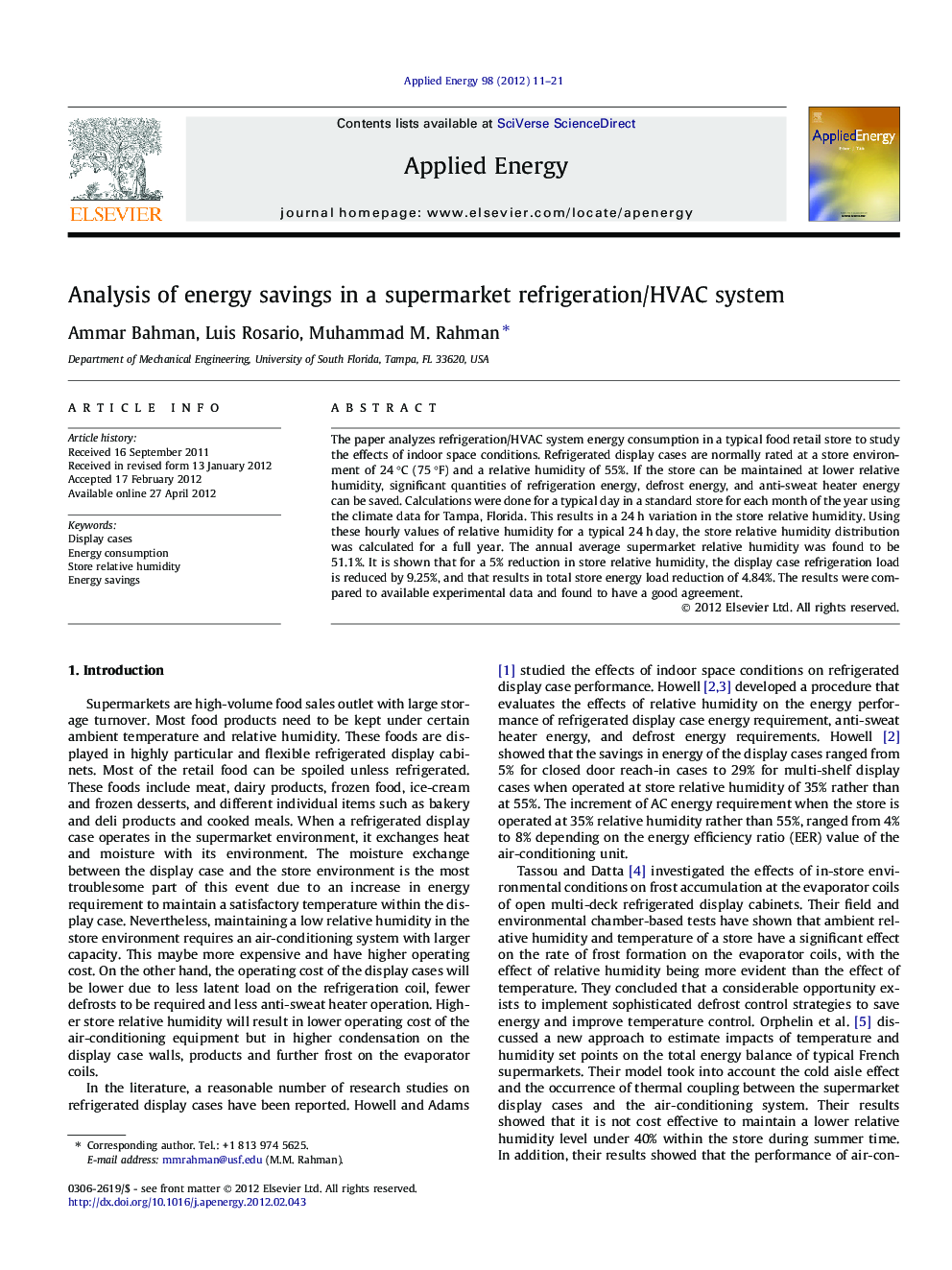| Article ID | Journal | Published Year | Pages | File Type |
|---|---|---|---|---|
| 243185 | Applied Energy | 2012 | 11 Pages |
The paper analyzes refrigeration/HVAC system energy consumption in a typical food retail store to study the effects of indoor space conditions. Refrigerated display cases are normally rated at a store environment of 24 °C (75 °F) and a relative humidity of 55%. If the store can be maintained at lower relative humidity, significant quantities of refrigeration energy, defrost energy, and anti-sweat heater energy can be saved. Calculations were done for a typical day in a standard store for each month of the year using the climate data for Tampa, Florida. This results in a 24 h variation in the store relative humidity. Using these hourly values of relative humidity for a typical 24 h day, the store relative humidity distribution was calculated for a full year. The annual average supermarket relative humidity was found to be 51.1%. It is shown that for a 5% reduction in store relative humidity, the display case refrigeration load is reduced by 9.25%, and that results in total store energy load reduction of 4.84%. The results were compared to available experimental data and found to have a good agreement.
► Analyzed refrigeration/HVAC system energy consumption in a typical food retail store. ► Calculations used the climate data for Tampa, Florida. ► Significant energy savings can be achieved with lower store relative humidity.
